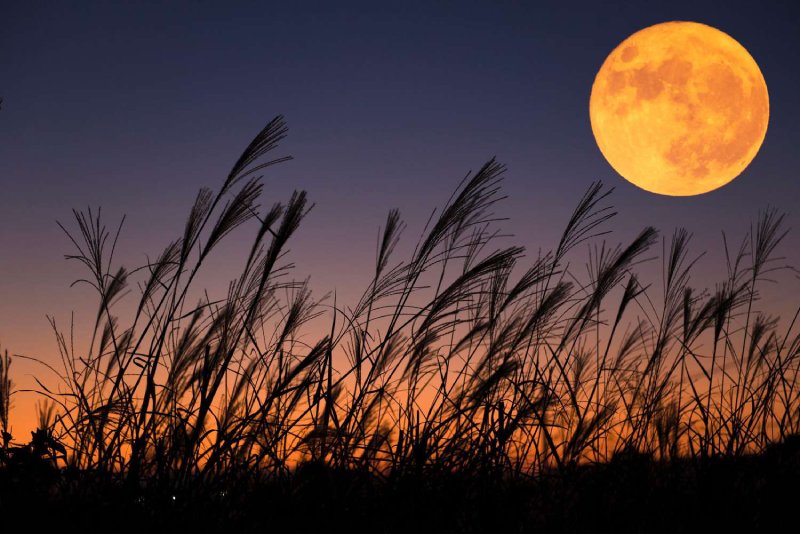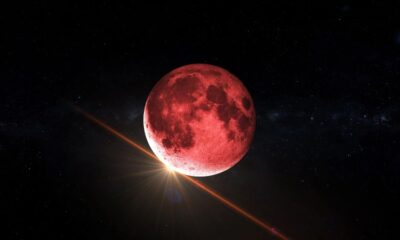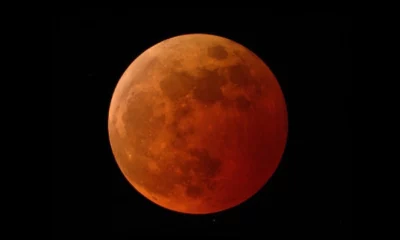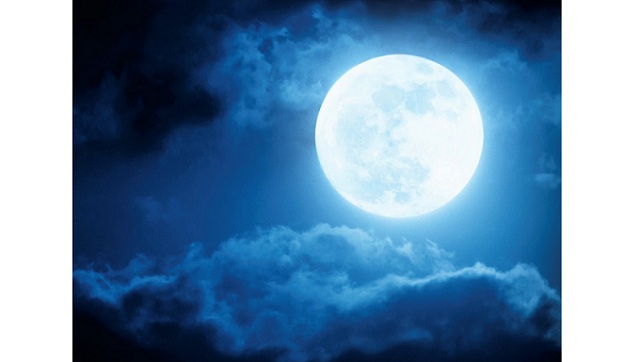Science
Last Supermoon 2023: Don’t miss the Harvest Moon September Full Moon view along with three dazzling planets

On Friday, September 29, the Harvest Moon, September’s full moon, will rise. This particular moon is noteworthy. It will be the last supermoon of 2023 and the fourth supermoon in a row, capping off a summer that has seen four supermoons in a row.
The Harvest Moon will be accompanied in the sky by a slew of planets, including the solar system’s greatest planets, Jupiter and Saturn, as well as its smallest planet, Mercury, appropriate for such a spectacular supermoon.
According to In the Sky, the full moon will rise over New York City at approximately 18:33 EDT (2233 GMT) and set the following day at approximately 06:52 EDT (1052 GMT). The lunar face will retreat after the full moon, which will be in the Pisces constellation; this process is known as “waning.” After that, the natural satellite of Earth will go into its next fascinating phase, becoming a fully dark new moon on October 14 to usher in a new 29.5-day lunar cycle.
The Full Buck Moon on July 3 marked the start of a stretch of four subsequent supermoons. The Full Blue Moon on August 30 and the Full Sturgeon Moon on Tuesday, August 1, respectively, were the next two supermoons in August.
The phrase “supermoon” refers to full moons that occur during the time that the moon is at its perigee approach or closest point to Earth in its orbit. This occurs because the moon’s orbit around Earth is not a complete circle but an ellipse, which causes it to move farther and closer to our planet at different periods.
When the moon comes close to Earth during supermoons, the lunar disk can appear around 30% brighter and about 14% larger than when the lunar face is visible during “regular” full moons. These variations might be discernible to moon-watchers with extensive experience observing lunar occurrences, but they aren’t actually that obvious to sky-watchers who don’t frequently examine the moon.
According to NASA, the moon will reach perigee on Wednesday, September 27, in the early evening at around 21:06 EDT (0106 GMT), two days before the Harvest Moon. According to eclipse specialist and retired NASA astrophysicist Fred Espanak, the moon will be around 224,657 miles (361,552 kilometers) from Earth at the time its fully lighted face is facing Earth. In contrast, the moon is typically located around 238,000 miles (382,900 km) from Earth.
The supermoon of 2023 won’t be the closest or brightest one, though. According to Espanak, the moon was about 222,043 miles (357,343 km) away from Earth on August 30 when there was a full blue moon.
The second-largest planet in the solar system, Saturn, will be the first planet to pass by the final supermoon of 2023 on Saturday. Saturn will rise at approximately 17:18 EDT (2118 GMT) and will be located in the Aquarius constellation, according to In the Sky. Jupiter, the largest planet in the solar system and a fellow gas giant to Saturn will rise at 20:17 EDT (00:17 GMT). In the constellation of Aries, Jupiter will be located to the left of the Harvest Moon.
The hardest to see and the final planet to pass by the Harvest Moon is Mercury. Mercury, the sun’s nearest neighbor, is now the planet that is most distant from our host star. Even though it appears in the morning sky, it vanishes at night. The smallest planet in the solar system will rise on Saturday at about 05:30 (09:30 GMT). Just over an hour before the year’s last supermoon sets, Mercury will spend some time in the sky alongside the full moon.
Those who miss the Harvest Moon will have to wait until the following supermoon, which will rise on September 18, 2024, and will also be a Harvest Moon. The second supermoon of the year will take place on October 17, 2024, one month after this one.
-

 Sports4 weeks ago
Sports4 weeks agoFIFA Club World Cup 2025: Complete List of Qualified Teams and Groups
-

 Sports3 weeks ago
Sports3 weeks agoAl Ahly vs Inter Miami, 2025 FIFA Club World Cup – Preview, Prediction, Predicted Lineups and How to Watch
-
Health2 weeks ago
Back to Roots: Ayurveda Offers Natural Cure for Common Hair Woes
-

 Tech2 weeks ago
Tech2 weeks agoFrom Soil to Silicon: The Rise of Agriculture AI and Drone Innovations in 2025
-

 Sports4 weeks ago
Sports4 weeks agoFIVB Men’s Volleyball Nations League 2025: Full Schedule, Fixtures, Format, Teams, Pools and How to Watch
-

 Startup3 weeks ago
Startup3 weeks agoHow Instagram Is Driving Global Social Media Marketing Trends
-

 Sports3 weeks ago
Sports3 weeks agoWorld Judo Championships 2025: Full Schedule, Date, Time, Key Athletes and How to Watch
-

 Sports2 weeks ago
Sports2 weeks agoFIBA 3×3 World Cup 2025: Full Schedule, Preview, and How to Watch
























